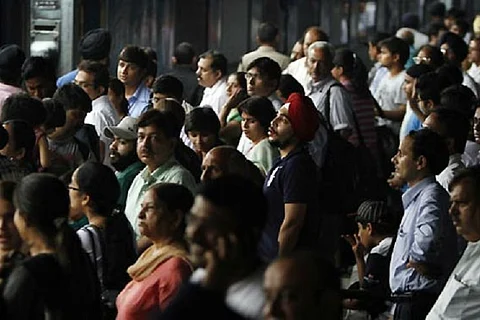

A new analysis of linguistic data has revealed a stark contrast between the Hindi-speaking belt and other regions of India when it comes to bilingualism. Over 90% of the population in states like Bihar, Uttar Pradesh, Rajasthan, and Himachal Pradesh speak only one language, with very few people reporting proficiency in a second language. In contrast, states like Tamil Nadu, Kerala, and Odisha have a significantly higher proportion of bilingual speakers.
The data which was analysed by The Hindu, shows that in Bihar, the percentage of people who speak only Hindi rose from 90.2% in 1991 to a staggering 95.2% in 2011. Uttar Pradesh and Rajasthan exhibit similar trends, with over 90% of their population being monolingual. This trend suggests a growing linguistic insularity in these regions, with fewer people acquiring proficiency in a second language, whether it be English or another Indian language.
Interestingly, the proportion of Hindi speakers who reported knowing English as a second language has seen a decline in states like Haryana, where it dropped from 17.5% in 1991 to 14.6% in 2011. This decline contrasts with trends in non-Hindi-speaking states, where English proficiency has been on the rise.
Unlike the Hindi belt, states in southern and eastern India show a much higher tendency towards bilingualism. In Tamil Nadu, the percentage of people who spoke only Tamil dropped from 84.5% in 1991 to 78% in 2011. A significant number of Tamil speakers have picked up English as a second language, with their proportion increasing from 13.5% in 1991 to 18.5% in 2011.
Similarly, in Odisha, monolingual Odia speakers decreased from 86% in 1991 to 74.5% in 2011. The trend indicates that people in these states are more likely to learn a second language, whether for employment opportunities, education, or migration.
The data also suggests a correlation between English proficiency and economic opportunities. States with a higher percentage of English speakers tend to have better Human Development Index (HDI) scores and more economic mobility. For instance, Tamil Nadu and Kerala, where a significant portion of the population speaks English as a second language, rank higher on socio-economic indicators compared to most Hindi-speaking states.
Migration patterns further reinforce this divide. Many people from the Hindi belt migrate to southern and western states in search of better economic prospects, often finding themselves at a disadvantage due to their lack of proficiency in English or regional languages.